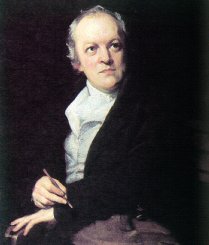William Blake - Key FactsWilliam Blake was a genius who would not be out of place at the dinner table with Michaelangelo or Leonardo Da Vinci. He was gifted in art, philosophy and poetry. Bookshops and libraries now hold many books about Blake. William Blake was a complex person, with a subtle and intricate perception of life. Sometimes his words are crystal clear but at other times they are incomprehensible. He often wrote with symbolism, allegory and other poetic images. Blake did not apologise for the broad scope of his work or for any difficulty someone else might have with it. Indeed, in a letter to a critic he wrote: William Blake was a complex person, with a subtle and intricate perception of life. Sometimes his words are crystal clear but at other times they are incomprehensible. He often wrote with symbolism, allegory and other poetic images. Blake did not apologise for the broad scope of his work or for any difficulty someone else might have with it. Indeed, in a letter to a critic he wrote:"But you ought to know that What is Grand is necessarily obscure to Weak men. That which can be made Explicit to the Idiot is not worth my care." Blake was often surrounded by controversy for his opinions and even for his artistic work, because he did not follow traditional styles and methods. He developed new techniques for printing and for colouring texts and images. He also painted in watercolour and tempera, disapproving of oil painting. Most of his earnings were from engraving. He occasionally printed from woodcuts. Artistic work for which Blake received commissions was often of religious or philosophical nature and particularly Biblical. Earning a living was sometimes difficult for Blake, but as a totally optimistic workaholic he took most things in his stride, including bouts of serious ill health. Blake's reputation among both scholars and the general public is now growing in leaps and bounds. In his own times, however, he was rarely treated with due respect. A man ahead of his time, he had great understanding and direct perception of the Spiritual dimension. He had no reservations about describing the essentially Divine nature of humankind or discussing his own status. But he had no affection for organised religions or for organised Christianity in particular.  He was keenly aware of the artistic and philosophical works of his peers and predecessors. He was a prolific producer of notes, sketches and written correspondence and of comments on other people's art work or philosophy. While often outspoken and unsympathetic, he was a sincere and affectionate friend. He was keenly aware of the artistic and philosophical works of his peers and predecessors. He was a prolific producer of notes, sketches and written correspondence and of comments on other people's art work or philosophy. While often outspoken and unsympathetic, he was a sincere and affectionate friend.
Dates
|
| Index Page |
| John Peirson - June 2002 |